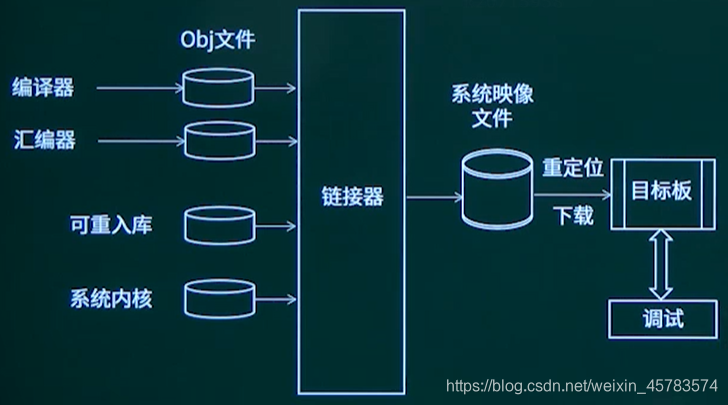嵌入式系统设计师学习笔记二十六:嵌入式软件程序设计①——嵌入式应用开发的过程
本文共 440 字,大约阅读时间需要 1 分钟。
嵌入式系统设计师学习笔记二十六:嵌入式软件程序设计①——嵌入式应用开发的过程
一个嵌入式应用项目的开发过程是一个硬件设计和软件设计的综合过程,一般而言要经历以下几个步骤:
①硬件的设计与实现 ②设备驱动软件的设计与实现 ③嵌入式操作系统的选择、移植,以及API接口函数的设计 ④支撑软件的设计与调试 ⑤应用程序的设计与调试 ⑥系统联调,样机交付应用程序的生产与加载

嵌入式软件开发有如下几个特点
①需要交叉编译工具
②通过仿真手段进行调试 ③开发板是中间目标机 ④可利用的资源有限 ⑤需要和硬件打交道嵌入式软件开发的挑战
①软硬件协同设计
②嵌入式操作系统 ③代码优化 ④有限的I/O功能嵌入式系统开发的最大特点:软硬件综合开发。
嵌入式产品是软硬件的结合体。 软件针对硬件开发、固化,不能进行任意修改。
嵌入式软件开发模式通常包括三种:
①本机开发
②交叉开发 ③模拟开发交叉编译:
在宿主机上必须采用交叉编译器来生成目标机的可执行代码。
嵌入式软件开发流程

下载与运行

转载地址:http://ntxpz.baihongyu.com/
你可能感兴趣的文章
Nginx配置后台网关映射路径
查看>>
nginx配置域名和ip同时访问、开放多端口
查看>>
Nginx配置多个不同端口服务共用80端口
查看>>
Nginx配置好ssl,但$_SERVER[‘HTTPS‘]取不到值
查看>>
Nginx配置如何一键生成
查看>>
Nginx配置实例-动静分离实例:搭建静态资源服务器
查看>>
Nginx配置实例-反向代理实例:根据访问的路径跳转到不同端口的服务中
查看>>
Nginx配置实例-负载均衡实例:平均访问多台服务器
查看>>
Nginx配置文件nginx.conf中文详解(总结)
查看>>
nginx配置详解、端口重定向和504
查看>>
Nginx配置负载均衡到后台网关集群
查看>>
Nginx配置限流,技能拉满!
查看>>
Nginx面试三连问:Nginx如何工作?负载均衡策略有哪些?如何限流?
查看>>
Nginx:NginxConfig可视化配置工具安装
查看>>
ngModelController
查看>>
ngrok | 内网穿透,支持 HTTPS、国内访问、静态域名
查看>>
NHibernate学习[1]
查看>>
NHibernate异常:No persister for的解决办法
查看>>
NIFI1.21.0_Mysql到Mysql增量CDC同步中_日期类型_以及null数据同步处理补充---大数据之Nifi工作笔记0057
查看>>
NIFI1.21.0_Mysql到Mysql增量CDC同步中_补充_更新时如果目标表中不存在记录就改为插入数据_Postgresql_Hbase也适用---大数据之Nifi工作笔记0059
查看>>